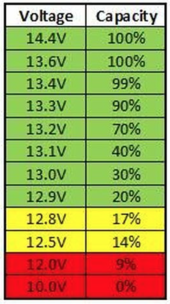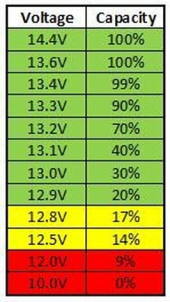I have a LiFePo4 battery that is 100ah. I tested it with my meter and it had 12.48 volts. A little low but not bad. Hooked it up to a charge controller set the charge controller to the LiFePo4 battery type and it is showing only about 1/5 the charger and starts trying to charge the battery. I changed the battery type to another type (Ternary or Lith) and they show charge is full.
My battery has a BMS and came with a charger to hook into the power outlet at home so it could charge. I am charging the battery now. Been charging for an hour. It shuts off when it is done.
Also in a side not the solar cells were showing around 21 volts prior to hooking up the LiFePo4 battery. When I hook up the battery the voltage from the solar cells always drops at least 5 volts.
Any ideas or suggestions.
I tested my rig last night all night with fridge hooked up. Checked it at 2am and it was fine. Checked it at 4am and the controller was off, battery?????, Inverter and Fridge off.
My battery has a BMS and came with a charger to hook into the power outlet at home so it could charge. I am charging the battery now. Been charging for an hour. It shuts off when it is done.
Also in a side not the solar cells were showing around 21 volts prior to hooking up the LiFePo4 battery. When I hook up the battery the voltage from the solar cells always drops at least 5 volts.
Any ideas or suggestions.
I tested my rig last night all night with fridge hooked up. Checked it at 2am and it was fine. Checked it at 4am and the controller was off, battery?????, Inverter and Fridge off.




